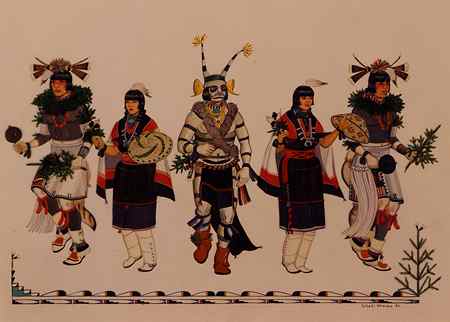Welcome to the Cherokee Booger Dance, a haunting tradition that echoes through time, carrying with it the whispers of history and the vibrant legacy of the Cherokee people. The Booger Dance is not just a cultural performance; it’s a window into the past, a ceremonial act that has been practiced for centuries by the Cherokee, reflecting their resilience, humor, and spirituality.
Imagine yourself stepping into a world where the boundaries between the physical and the spiritual blur, where masked dancers embody both the revered and the feared, the known and the unknown. These ‘boogers,’ as they are called, represent outsiders or spirits, often characterized by exaggerated and humorous masks. The dance itself is a form of social commentary and storytelling, used by the Cherokee to convey messages about their interactions with outsiders, particularly European settlers.
The origins of the Booger Dance are deeply rooted in the Cherokee’s pre-contact history. Before the arrival of Europeans, the Cherokee inhabited the southeastern United States, thriving with a rich culture and complex societal structures. The Booger Dance served as a means to express their worldview and safeguard their traditions. It was a response to external threats, a way to mock and demystify the power of those who sought to oppress them.
As European settlers expanded westward, the Cherokee faced immense pressure and adversity. The Trail of Tears in the 1830s stands as one of the most tragic events in Cherokee history, where thousands were forcibly removed from their homelands. Despite such trials, the Cherokee people used their cultural expressions, like the Booger Dance, to maintain their identity and resist assimilation.
One of the notable figures associated with the Cherokee during this period was Sequoyah, the creator of the Cherokee syllabary. Sequoyah’s work was instrumental in preserving the Cherokee language and culture, offering a written form that enabled the documentation of traditions, including ceremonies like the Booger Dance.
The Booger Dance has evolved over time, adapting to the changing circumstances of the Cherokee people. Today, it is performed not only as a cultural preservation but also as an educational tool, allowing younger generations to connect with their heritage. The dance is often featured in festivals and cultural gatherings, celebrated for its ability to convey profound messages with humor and creativity.
In the broader historical context, the Booger Dance is a testament to the Cherokee’s resilience and adaptability. It serves as a reminder of the importance of cultural heritage and the power it holds in uniting people. As you reflect on this rich tradition, consider its legacy and the ongoing efforts to preserve such invaluable cultural expressions.
Though the dance is deeply rooted in the past, its significance continues to resonate today. It stands as a symbol of cultural survival and a beacon of hope, showing how art and tradition can sustain a community through even the darkest of times. Whether you are experiencing this from afar or have the opportunity to witness a performance, the Cherokee Booger Dance invites you to appreciate the depth and beauty of Cherokee culture, a living testament to their enduring spirit.





